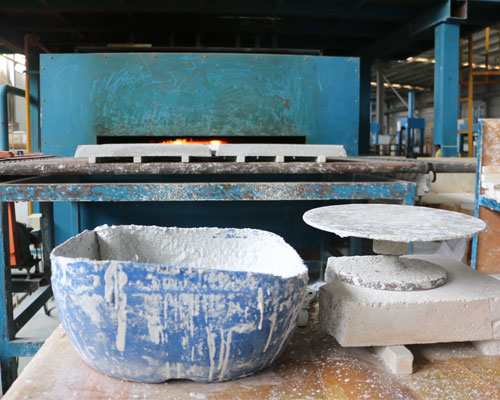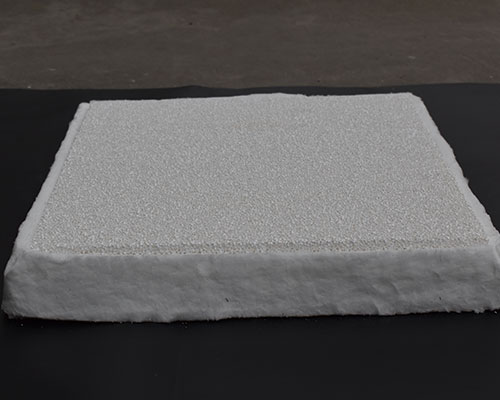Sodium silicate has the properties required as a coating compound for internal ceramic filters. First, the coating compound needs to soften or become viscous at the temperature of the molten aluminum alloy in order to adsorb (or adhere) the inclusions contained in the molten aluminum. However, the coating compound should not melt at the temperature of molten aluminum. This is because, if melted, the melted coating compound sometimes oozes into the molten aluminum stream together with the inclusions once attached to it, thereby contaminating the molten aluminum. Therefore, in order to keep the coating material soft and prevent it from melting during the filtration process, the coating material needs to meet the following relationships:
The softening temperature of the coating compound ≤ the melting Al temperature ≥ the melting point of the coating compound.
Sodium silicate can satisfy this property because it has:
1) The melting point of about 730 to 870°C is almost equal to or higher than the temperature of molten aluminum (about 750°C);
2) A softening temperature of 600°C, which is almost equal to or lower than the temperature of molten Al.
Secondly, the sodium silicate of the present invention has excellent adhesion strength to the surface of the aggregate network member to resist the impact strength and adhesion strength of the molten aluminum flow. Therefore, there is no need to use adhesives as in these conventional techniques. In addition, even when an adhesive is used to improve adhesion, the required amount of such an adhesive can be significantly reduced. Therefore, the filtering ability to remove inclusions can be improved.

Another important aspect is that sodium silicate ceramic filters have low adhesion to molten aluminum alloys, but have high adhesion to oxide inclusions such as alumina (Al2O3), spinel (MgAl2O4) and magnesium oxide (MgO). Most of the small inclusions in the aluminum alloy are melted. This selective adsorption capacity for inclusions is extremely important for internal ceramic filters. Without selective adsorption, it is likely that only the molten aluminum alloy covers the coating layer of the coating material, thereby reducing the unpacking efficiency of the coating material. This may cause problems related to basic filter performance, such as severe filter clogging and shortened filter life.
Due to the properties of sodium silicate, the coating amount of sodium silicate can be appropriately set according to the content of the ceramic filter, the required removal capacity, and the cleanliness required for high-quality molten aluminum.
In order to reduce the inclusions to such a low level, according to the particle size and the number of inclusions in the molten aluminum, and the filtration area of the filter, the coating amount of sodium silicate and the flow rate of molten aluminum are adjusted. However, if the aggregate mesh member is coated with too much sodium silicate and the filter is too fine, it may cause practical problems. The adhesion between the layer compound and the surface of the polymeric network member is poor. Therefore, in order to prevent these problems, it is preferable to select the coating amount of sodium silicate in the range of 0.05 g/cm3 to 1.0 g/cm3.

